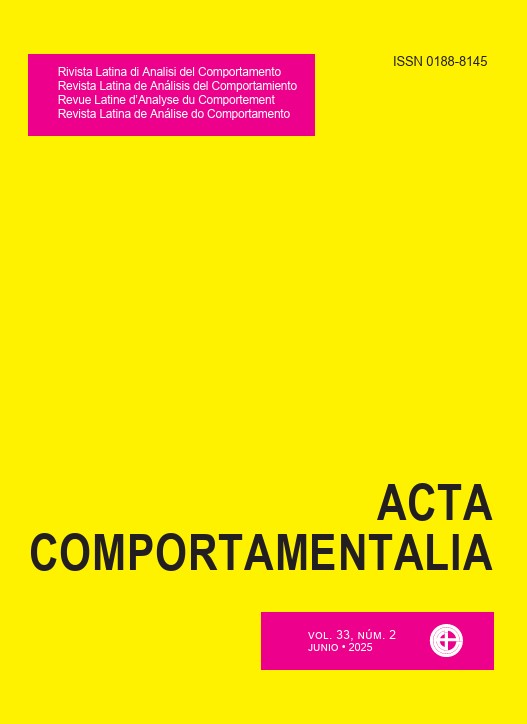Simultaneous vs. Successive: Tracing Characteristics of Simple Discrimination Processes
DOI:
https://doi.org/10.32870/ac.v33i2.88580Keywords:
simultaneous discrimination, successive discrimination, stimulus control, latency, humansAbstract
Two of the most traditional procedures for establishing simple discrimination are simultaneous and successive discrimination training. Even though both procedures are regarded as effective, there is some evidence that simultaneous discrimination is the more efficient alternative. However, these procedures may differ from each other regarding several other aspects. For instance, it has been pointed out that simultaneous discrimination may produce selection or rejection control depending on how stimuli are presented. Successive discrimination, on the other hand, requires both selection and rejection control. The relation between different learning processes was explored by Silva (2008) in terms of observing responses. This study systematically replicated Silva’s procedure, but instead of measuring eye movements, an adjustment allowed a comparison between simultaneous and successive discriminations regarding latency. It is assumed that latency is an indirect measure of mediating responses, a broader category that includes, among other responses, eye fixations. Eleven participants were exposed to both simultaneous and successive discrimination training. The design was counterbalanced between participants to assess the possible effects of order. An analysis of variance with random effects revealed a significant difference regarding the average number of trials to criteria. These results follow the literature that suggests that simultaneous discrimination is more efficient than successive discrimination. However, some individual performances indicate different learning processes among participants. Furthermore, a similar analysis of the variance of latencies shows a significant interaction between the procedures and the order of exposure to them. The results show that simultaneous discriminations produce higher latencies, especially in the first trial block. Such a difference suggests that mediating responses are more prevalent during this acquisition phase. These results were compared with previous literature showing a decreasing latency during simultaneous training, which in turn is associated with observing a single stimulus. Moreover, the interaction effect suggests that each procedure produces a different repertoire. For instance, it is possible that simultaneous discrimination established generalized responding since, during this procedure, there was always an S+ per trial. It is also suggested
that, on the other hand, successive discrimination could improve later recognition of S-. Given the several possible differences between training structures, we argue that simultaneous and successive discriminations are unalike regarding both the process and content of learning. Therefore, a direct comparison between them using simple efficiency measures might be inappropriate and possibly misleading since the alternation between them could produce relevant interaction effects in applied settings. The main theoretical implication is the discussion about simultaneous and successive discrimination being brought under the common category of discrimination training. Given the fundamental differences between them, we suggest a few experimental solutions that could address important limitations of the present study while continuing to investigate how different training structures result in univocal stimulus control.
Downloads
Downloads
Published
How to Cite
Issue
Section
License

<a rel="license" href="http://creativecommons.org/licenses/by-nc-sa/4.0/"><img alt="Licencia de Creative Commons" style="border-width:0" src="https://i.creativecommons.org/l/by-nc-sa/4.0/88x31.png" /></a><br />Este obra está bajo una <a rel="license" href="http://creativecommons.org/licenses/by-nc-sa/4.0/">licencia de Creative Commons Reconocimiento-NoComercial-CompartirIgual 4.0 Internacional</a>.






